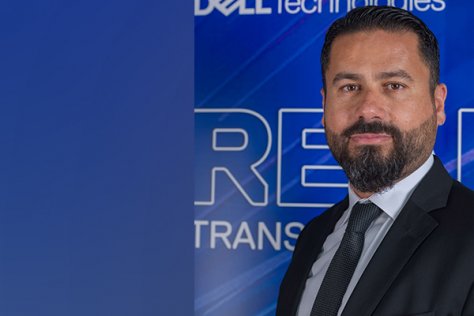Michel Nader, Sr. Director – Data Protection Solutions – MERAT, Dell Technologies, highlights why it is imperative for organisations in both public and private sectors to invest in comprehensive security approach. 
Ransomware can plague operations and hamper everything from public safety to transportation and waste management. As the GCC is embracing the rapid pace of digitisation and diversifying its economy by shifting towards digital and investing in the latest technologies, cybersecurity becomes paramount. According to a recent forecast by Gartner, MENA enterprise information security and risk management spending will total $1.7 billion in 2020, an increase of 10.7% from 2019.
An investment in the right technology and careful execution of cyber procedures will immediately transform the security posture of local governments and organisations. While it may not be known when a threat will come, these steps can help mitigate the effects of a breach:
Develop a cyber playbook
Like agencies that have preparedness plans to protect and respond to natural disasters, cybersecurity teams also need to plan in advance for cyber incidents, including the development of playbooks with varying scenarios.
The cyber playbook should have a comprehensive approach to security focused on identifying, protection, detecting, responding to and recovering issues within an environment. It should also be aligned to national cybersecurity frameworks. IT leaders must ensure the playbook isn’t stagnant as the organisation continues to evolve.
Train, train and train again
Security teams should always utilise opportunities for continual training. When a new member joins the team, use the onboarding process to reintroduce exercises and best practices to the whole team. Leaders should also leverage creative methods—including team events and gaming-based training, such as capture the flag and software that simulates attacks—to facilitate greater participation and learning. These scenarios should include best-case and worst-case outcomes of an attack.
Awareness training is also key for teams to be able to identify and respond correctly to suspicious activity within networks.
Audit (and supplement) personnel
Cyber leaders should continually audit organisational roles to determine specific strengths and weaknesses within their teams to assess their stance on risk management.
The need for cyber talent is clear – The lack of cyber personnel and resources are undeniable. A successful way to bridge this gap is through a hybrid managed service model, which includes a combination of civil servants and support agreements with private sector companies that help augment resources to respond quickly in the face of cyber incidents.
Proper cyber hygiene
Cyber hygiene isn’t a one-off exercise — It’s a consistent mindset that encompasses all parts of our life and a continual journey. As governments and organisations reinvent the ways they operate and interface with constituents, they must also empower employees through a workforce transformation to meet the growing security expectations of the 21st century. This needs to be a year-round effort, with substantial, calculated investments in employees through awareness campaigns.
Cyber hygiene and culture begin at home. It’s important agencies and employees educate using phishing exercises and cyber literacy, helping understand the possible negative consequences both at home and in the workplace.
Invest in infrastructure with built-in security
Agencies struggle to protect the numerous endpoints that fall outside of the traditional security reach of the organisation. As the number of tools and cloud-based systems increases, the volume of generated data also rises, expanding IT infrastructure beyond data centres, making it harder to protect against threats.
It’s vital then for governments to invest in a secure, flexible infrastructure from the beginning, extending from edge to core to cloud. Doing so will allow them to focus on continually improving citizen experience without having to worry about the disruption of layering security on top.
The road ahead
An investment in a comprehensive security approach saves invaluable time and resources, and also preserves public trust. Fighting ransomware is an iterative process that measures progress. Organisations should tailor these efforts to make the most significant impact and meet with their business peers to re-assess risk and adjust the course of cybersecurity programs accordingly.





